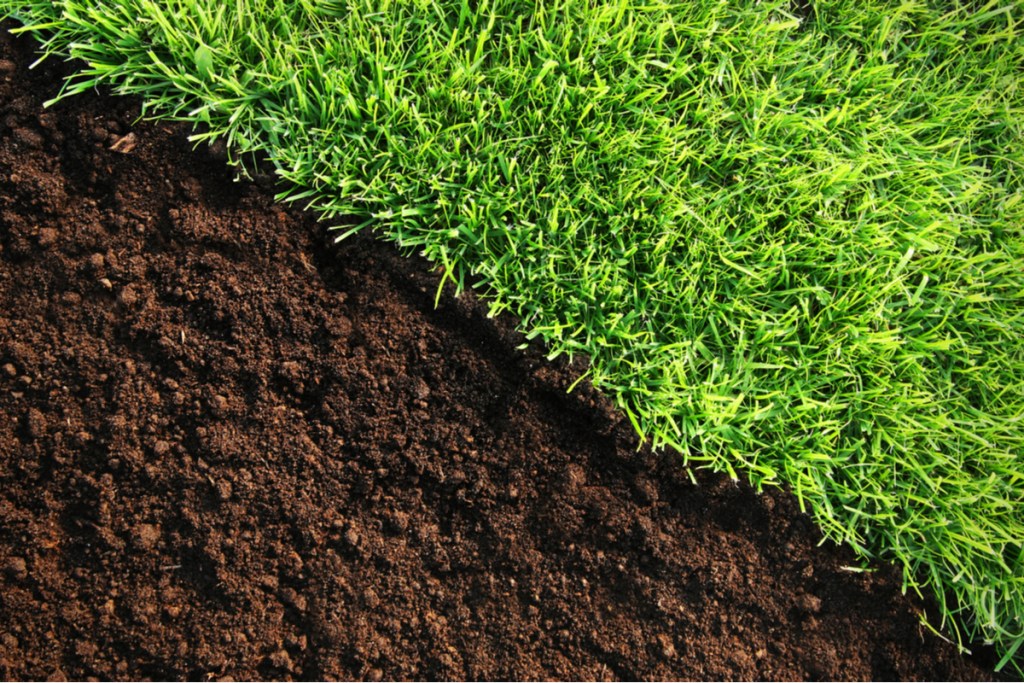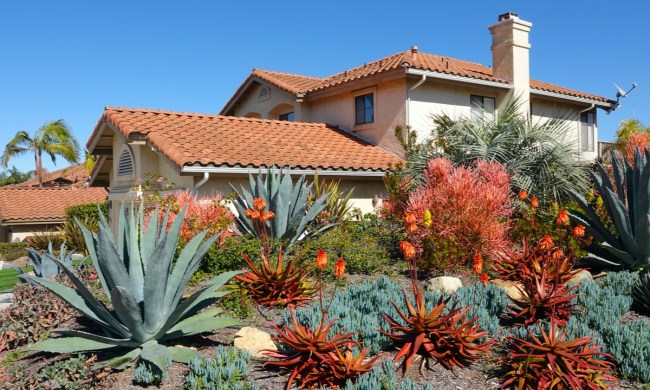When your lawn is green and lush, it contributes exponentially to both your enjoyment and your home’s curb appeal. While good lawn care practices can go a long way toward achieving a pristine yard, sometimes there are elements outside of your control. If your grass starts to look sickly in some places, whether it’s from poor environmental factors, disease, or even pet damage, there are some methods you can use to fix your lawn and restore it to its former glory. How do you fix patchy grass? Let’s dig into those methods.

How to fix patchy grass with seed
If you’re seeing a large area of lawn that’s bare, or if bare spots are spread prevalently across your yard, the best way to restore your grass is to lay seed over the areas that are struggling. That way new grass will grow naturally and will get stronger with appropriate care. It’s important to seed in early spring so that the grass has matured enough to withstand hot summer weather. Follow these steps for successful seeding.
Step 1: Pull any weeds and dig up any patches of dead grass from the area with a garden spade.
Step 2: Use a rake to remove all grass clippings from the area. If they’re not removed, seeds will struggle to reach the soil and block the sunlight for any seeds that make it through.
Step 3: With the rake, even out and smooth the surface of the remaining soil that will be seeded.
Step 4: Sprinkle grass seed onto the bare areas of the lawn. Make sure you sow generously so that the grass grows thickly in those spots.
Step 5: Sprinkle a thin layer of topsoil onto the seeds you just sowed. It’s also a good idea to sprinkle some organic compost to give the germinating seeds some added nutrients.
Step 6: Water the sown areas generously and follow the instructions on the seed packaging for an appropriate watering schedule for successful growth.
Step 7: Feed your lawn with an organic fertilizer roughly six or seven weeks after seeding.
Step 8: Avoid mowing any sections you’ve seeded until the new grass has grown strong and is about 4 inches long.

When should you use a grass patch?
Sometimes lawn damage is localized to a small area, like the area your dog prefers to relieve himself or a spot that housed a lawn structure for a while. While you could certainly seed this area with new grass, a quicker fix is to lay a patch of sod to immediately revive the area.
Step 1: Use a garden knife to cut out a patch of your new sod. The patch should be slightly larger than the patch of dead grass you’re replacing, so add about two inches on all sides.
Step 2: Place the patch of new sod on top of the area you’ll be laying it in. Use your garden knife to cut a square in your lawn in the shape of the new patch of sod. Put the new sod patch aside for now.
Step 3: Pull up the old patch of grass you’ve just cut and discard it.
Step 4: Prepare the soil for the new sod by breaking it up with a garden spade or rake. The soil should be very loose so that the roots of the new sod can take hold.
Step 5: Place the new sod patch into the cleared spot and walk on it a bit to compress it down.
Step 6: Water the patch right away and plan to water it a couple times per day for the next week or so. Within a couple of weeks, you won’t be able to tell the difference between your old lawn and your new patch.
How to care for your lawn and avoid unhealthy grass
Now that you’ve repaired that patch of unsightly dead grass, it’s important to keep to a healthy maintenance schedule for your lawn. This will help prevent yellowing or dying grass in the future. There are some common misconceptions about lawn care that we’ll review here so that you don’t work hard to achieve little.
Step 1: Mow to the proper height for the season. In the fall and spring, cut grass as short as 1.5 inches so that sunlight and nutrients can reach the soil and roots easily. In the heat of summer, keep blades a bit longer at 2 inches minimum. This helps shade the soil beneath to lock in moisture and keep your thirsty grass satisfied.
Step 2: Dethatch with a rake to allow your lawn to soak up nutrients. A layer of thatch creates a barrier that blocks out the sun, nutrients, and water from reaching the soil and your grass’s roots.
Step 3: Water heavier and less frequently. A light sprinkling every day actually discourages root growth. You’ll only wet the blades and the top layer of soil, so roots will not grow very deep. Giving your grass a heavy soak a couple times per week gets that water deep into the soil and encourages deep root growth and a healthy lawn.
Step 4: Aerate in the spring and fall. Aerating loosens compacted soil and lets your grass’s roots breathe. It should be done in the spring after your lawn has housed heavy snow for months, as well as in the fall after the grass has seen a lot of foot traffic.
Your lawn is the crown jewel of your home and you probably want to show it off during all those summer parties you’ll be throwing. Make sure you tackle those patches of dead grass with one of our fixes and be sure to follow a healthy lawn maintenance schedule to achieve a green and pristine yard for the summer.




